Benelli’s shiny new bolt-action penny, the HPR, is a durable long-range tack driver perfect for the range or the woods.
I’ve been a Benelli fan for years. The first time I squeezed the trigger on an SBE shotgun and folded a giant goose, I knew I’d found a trusted field companion. Since that hunt, I’ve tinkered with and tested many Benelli makes, from the M2 Series to the SBE3 to multiple LUPO bolt-action builds. I’m always impressed with Benelli’s purposeful innovation and dedication to providing hunters with shotguns and rifles that will make them more proficient in the field. This past fall, I had the pleasure of toting Benelli’s LUPO HPR Bolt-Action rifle to the Sooner State for a deer hunt, and it didn’t disappoint.
Before we dive into the hunt, though, let us first learn the ins and outs of Benelli’s long-range tack driver.
First Impressions
HPR stands for High Precision Rifle. One of the first things that jumped out at me when I opened the Pelican hard case and removed the rifle was its custom look.
The HPR doesn’t look like a standard factory bolt gun. For starters, the stock looks and feels like a custom synthetic stock. The pistol-style grip feels excellent in the hand, and I appreciated the deep recessed groove behind the grip and before the comb. The comb is fully adjustable to eight different height positions via the depression of a single black button integrated into the stock.
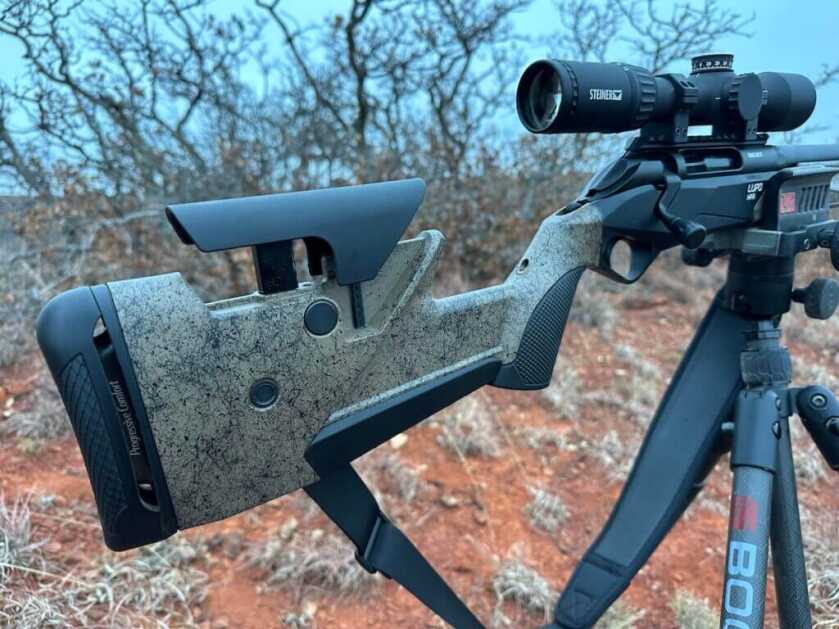
I appreciate an adjustable comb height to ensure proper eye-to-optic alignment, and few standard rifles sport an adjustable comb system that is this straightforward. Another winning feature is that the removal of one set screw allows for a grip swap. I also like that the bottom of the stock is removable, and a gap can be created when shooting off bags on a bench. When hunting, slip the bottom back on and have a standard bottom stock design.
The LUPO HPR also features four drop positions, three deviations (neutral, right, left), and six length-of-pull adjustments. Most standard factory bolt-actions offer two or three LOP adjustments, but few offer six. Again, Benelli’s goal with this rifle was to ensure maximum shooter customization, which leads to impressive downrange accuracy.

The LOP adjustments involve interchanging a pair of recoil pads with two thicknesses. The recoil pads are Benelli’s award-winning Progressive Comfort, which promises to negate as much felt recoil as possible.
The Mag M-Lok attachment points make adding a sling and attaching a bipod a breeze. The magazine is a detachable double stack, the trigger is adjustable, and I love the wide, flat forearm with AirTouch to ensure a secure grip no matter the environmental conditions.
Other must-mention features included the free-floating, fluted Crio Barrel, which Benelli brands a “Sub-MOA” producer. The barrel is threaded and fitted with a Crio System Muzzle Brake to reduce recoil further.
The Build
I’ve grown to love rifles with a one-piece 30 MOA Picatinny rail. The rail makes optic mounting a breeze and allows the shooter to set the front and back of the optic in various positions. Again, this goes back to Benelli’s drive to provide hunters and target shooters with a rifle that fully fits them.
I attached Steiner’s H6Xi 2-12x42mm scope, which, thanks to the Picatinny rail and adjustable comb, made the process straightforward and allowed me to achieve perfect comb-to-optic height and proper eye relief. The position of the bolt also allows for ease-of-optic mounting and doesn’t interfere with the scope’s housing. This would remain true if you opted for a larger, more powerful optic.
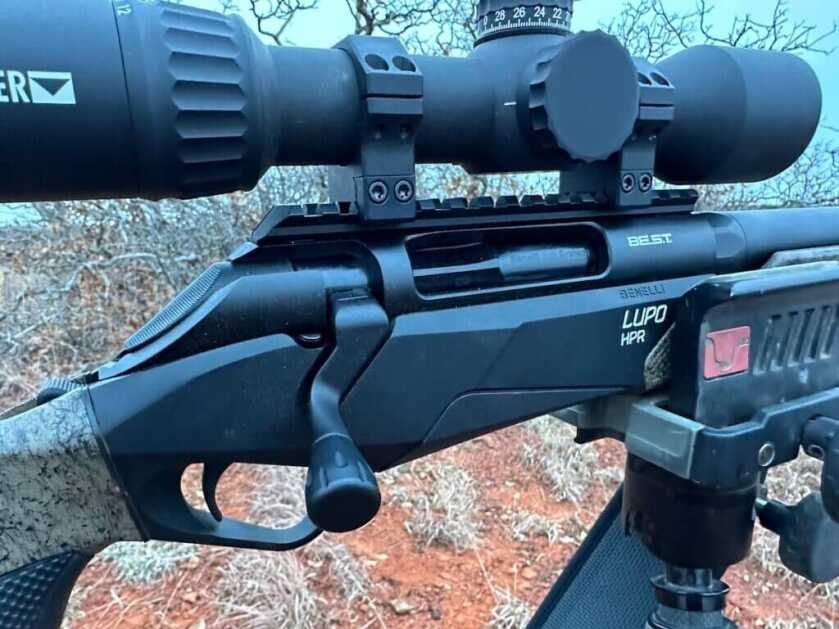
If you follow the torque guidelines provided by your optic manufacturer, you should have zero problems mounting your optic.
I also added the included M-LOK sling to the stock and, after some tinkering, decided on one of six forearm mounting positions.
Pre-Shot Noticings
After mounting any rifle with an optic, I get to know the gun first before going to the range to sling lead. The more I learn about the rifle’s fit and function beforehand, the more successful my range mission will be.
I first noticed this rifle was engineered to be a competition bench gun or a sit-and-wait hunting rifle. My rifle with attached optic and full magazine pushed the scale over 10 pounds. For this reason, I won’t brand this rifle a run-and-gun deer or elk rifle. Instead, this is the type of rifle you tote to a pinch point, meadow surrounded by dark timber, shooting house, or ground blind.
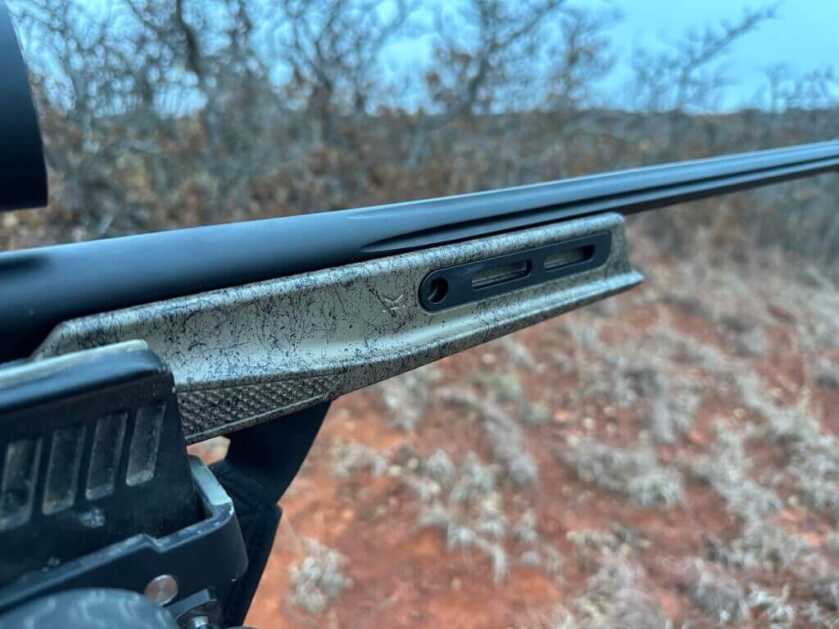
The rifle shoulders easily, and its heaviness increases its steadiness during off-hand aiming practice. love the wide, flat forearm, and when I placed the rifle on bags on a bench and in my BOG DeathGrip Infinite Carbon Fiber tripod, it felt ultra solid and steady.
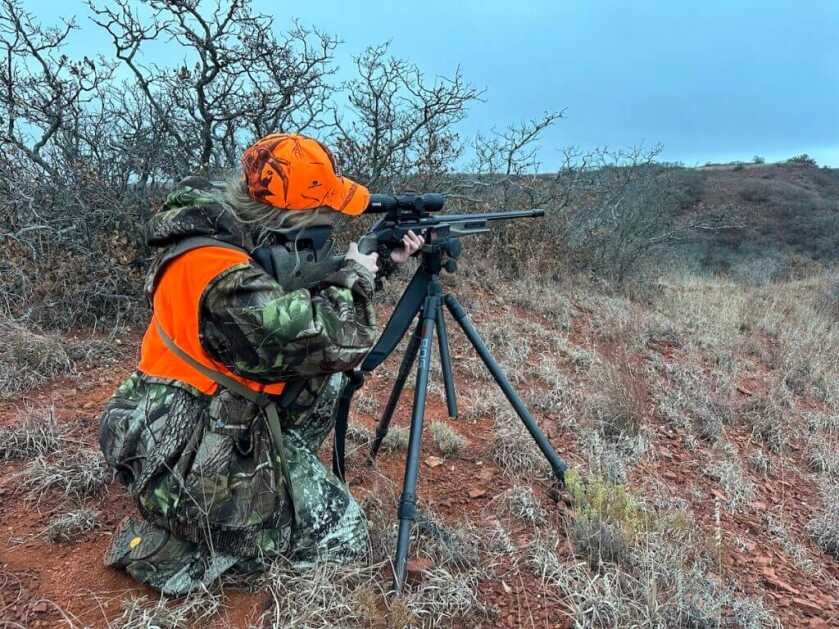
After removing the magazine and pointing the barrel safely downward, I manipulated the BE.S.T coated bolt handle. Chambered in .308 Win, a short-action caliber, the stroke was short and smooth. I love short actions. The trigger break was butter. There was no creep or hangups. Steady pressure produced a crisp break, and I found no reason to make any adjustments.
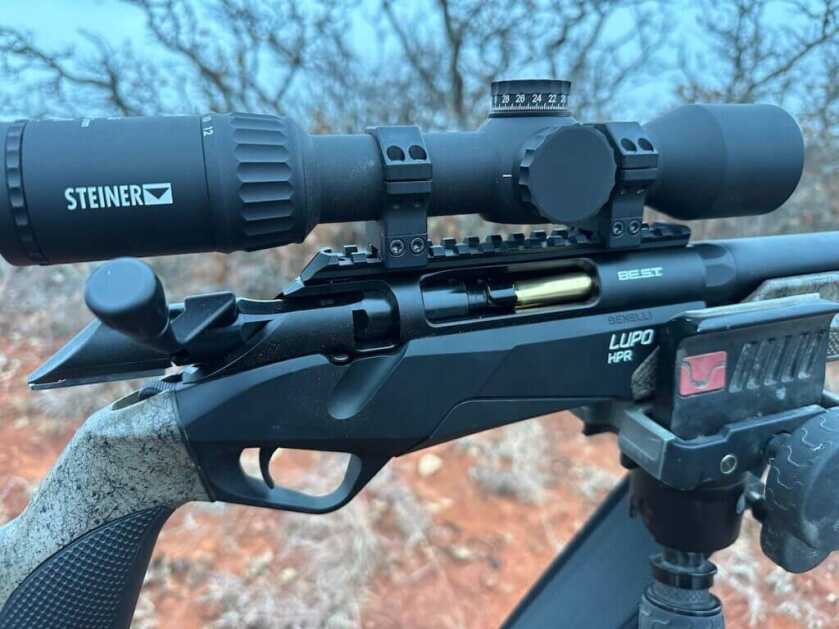
The safety is located directly inline where the top of the stock meets the action, and I found the location extremely functional. I also favor the long bolt release button on the receiver’s left side.
Time To Go Boom!
After removing the bolt and performing a quick bore sight job, I took two shots from 100 yards to hit a 1/2-inch diamond bullseye with the second shot. Set on the shooting bench, the recoil was minimal, the muzzle jump was zero, and I was impressed with the immediate accuracy.
After giving the CRIO barrel time to cool, I shot a three-round group from 100 yards in under five seconds that I could cover with a nickel. Not only did the rifle’s accuracy impress me, but I was also impressed with how quickly I could operate the bolt. Because recoil was virtually nothing, I could stay in my optic and execute immediate follow-up shots.
For a week before heading to Oklahoma to chase whitetails, I punched paper and rang steel from 100 yards to 800 yards with a pair of different cartridges. While the rifle favored Federal’s 175-grain Terminal Ascent bullets, Norma’s 180-grain bullets proved uber-accurate.

I fired the LUP HPR prone off a backpack, kneeling with the rifle in a tripod, off-hand, and off a bench, and I can confidently say it is one of the most accurate factory rifles I’ve ever tested. It reminds me of a long-range chassis rifle in a straight, standard bolt-action system.
Time To Hunt
This was a media hunt, which required me to use Norma’s 180-grain BondStrike Long Range bullets. I wasn’t thrilled about this. I feel 180-grain bullets are overkill for whitetails, and when hunting the open landscape of western Oklahoma, I would have been more comfortable with a faster 150-grain bullet. Unless elk or other heavy-boned game is on the menu, I would opt for the lighter-weight bullet. I shot Fiochhi’s Hyperformance 150-grain SST Polymer Tip Pat Tail to 500 yards with excellent results.
It was mid-November, and the whitetail rut was rocking. I’d spent several weeks in Oklahoma in November, and I was greatly looking forward to this hunt.
Surprisingly, the walk to my cabin-like shooting house on the hunt’s first morning was over a mile and involved several uphill stints. As a western hunter, I have zero issues with walking, and I’m not complaining. This is a rifle review, though, and I want to reiterate that the LUPO HPR is not a rifle you want to tote long distances. I didn’t mind it in this case because I knew this was a sit-and-wait hunt, but if you’re looking for a long-range rifle that will make an excellent saddle gun or a remarkable carry gun, the LUP HPR isn’t it.
The shooting house was as cool as I’ve been in. It was rustic, like something from an old western movie, and the view was stunning. Steam rolled off the distant Canadian River, and the green wheat field in front of me held numerous does and small bucks.
The field cleared when the sun entirely crept over the horizon. Though I could see flashes of deer along the distant river bottom, the action slowed. I feel deer calls were made to be used in Oklahoma, and I stuck my rattling antlers out the window of the shooting house and cracked them together as loud as I could. It was a calm morning, and I wanted the sound to carry.
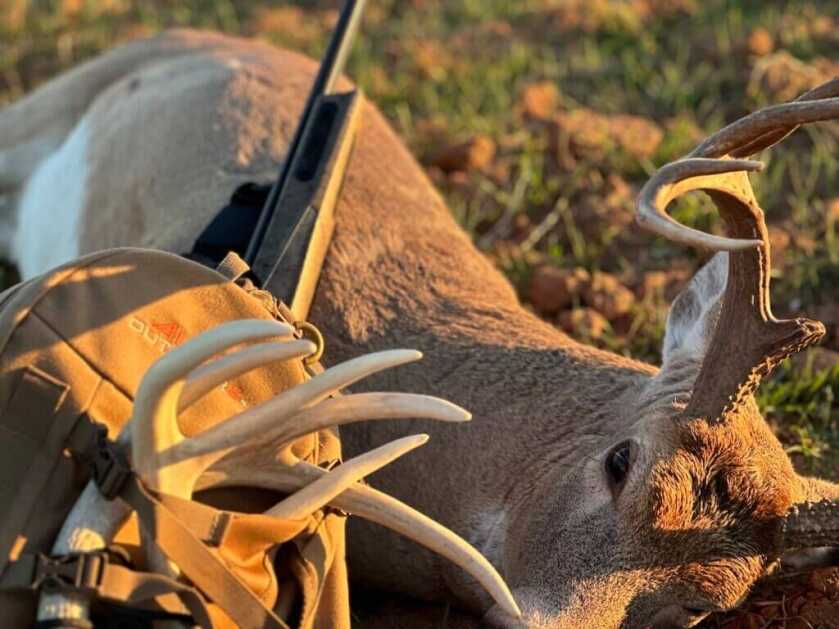
I’d just sat the horns back in the corner of the blind and started scanning the field when I spied a buck. He was coming at a full run across the wheat field. I love the magic of the rut.
The problem was the buck was coming so fast I was worried he would get under the hill, out of sight, and come up downwind of my position. After getting the HPR set on the single wooden beam that made up the front shooting window, I ranged the buck at 304 yards and yelled to stop him. The new range was 276 yards, and the flat, wide forearm provided so much balance that I could find the buck quickly, settle the crosshairs, and make a perfect shot.
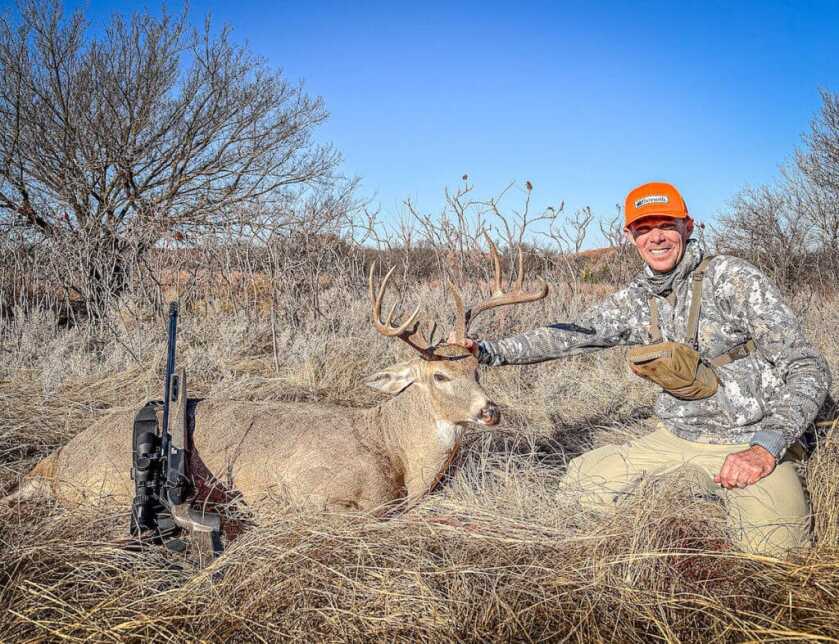
Final Thoughts
This is one of my all-time favorite bench and sit-and-wait rifles. The LUPO HPR is ultra-accurate and fun to shoot. Benelli offers it numerous long-range calibers, including the .300 Win. Mag., 6.5 Creedmoor, 6.5 PRC, .338 Lapua Mag., .300 PRC, and of course, the caliber tested in this article, the .308 Win.
Learn more by visiting Benelli

